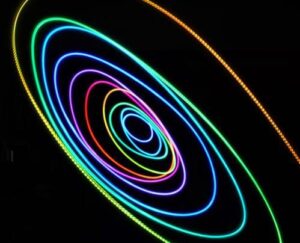Fiber laser technology has proved to be an effective instrument in a number of various fields and applications. If it comes to the field of science, fiber laser systems are applied in medical sciences, biology, micromachining, etc. Fiber laser is in many ways the best solution for professional engineers and researchers for their projects’ development.
The most general characteristics of the fiber laser systems
The top quality of the laser beam, great performance and power efficiency have helped fiber lasers to find a place in many areas of scientific and biomedical studies. Fiber lasers imply an ultra-narrow linewidth and reliable working operation thanks to the short cavity length and phase-shifted design.
Advantages of single-frequency fiber lasers
The single-frequency fiber lasers are perfectly fit for various applications due to the various ranges of frequency or wavelength. Such applications include, for instance, optical trapping and atom cooling. The other parameters of laser modules, like compact size and low noise, make it possible to use it in interferometric sensing.
Laser engineers and scientists are constantly looking for new opportunities for the fiber lasers and developing more sophisticated technologies.
Types of fiber lasers due to their parameters
Fiber laser systems can be classified due to many categories, but there are parameters that play a crucial role in operations.
Key parameters
- Laser power. High-power fiber lasers provide more energy and operate faster in comparison with low-power lasers. Laser power is measured in watts.
- Mode. This parameter relates to the core’s size in the optical fiber. There are single-mode and multimode fiber lasers. The single-mode lasers have a smaller diameter of the core and transit laser light successfully and at the same time providing a better laser beam quality. Multimode lasers have larger diameter in comparison with the single-mode ones.
- Laser source. Lasers can also be varied considering the applied material of the laser source. There are thulium-doped fiber lasers, erbium-doped fiber lasers, ytterbium-doped fiber lasers, etc. Each of them has different wavelengths and fields of application.
- Operating mode. The difference of fiber lasers depending on the operating mode is connected to the way the laser beam is released. There are usually lasers with continuous-wave or the pulsed mode. The pulsed lasers have the short pulses that are released at an established repetition rate. While in the continuous-wave operation mode, a continuous laser beam is released. Simply put, its amount of energy is at the same level all the time.
Fiber lasers for science in short
Fiber lasers are considered to be a unique technique suitable for many applications that can be combined into one sphere called the science.
Applications in various scientific fields
Talking about science, laser modules perfectly fit for biophotonics, multiphoton microscopy, neuroscience, etc. From the date of creation, a fiber laser has been applied as an instrument for research in astronomy, physics, biology, chemistry, etc.
Ultra precise fiber laser technology covers a variety of medical and scientific disciplines, where fiber lasers are already used, or their strong impact is possible, for example:
- High energy physics;
- Attosecond science;
- Ultrafast X-ray science;
- High harmonic generation;
- Femtosecond chemistry, etc.
The ultrashort pulse fiber lasers allow conducting scientific and medical research in different fields. The fiber laser systems with the mid-infrared wavelength range provide the analysis of biochemical content of tissues.
Here are some other spheres where fiber lasers are applied.
Fiber lasers for SFG spectroscopy
One of the applications of the fiber laser systems is SFG spectroscopy. Spectroscopy provides detailed data on the molecular level about the structure and molecular groups by studying the atoms’ vibrations.
Advantages of SFG spectroscopy
This technology outperforms the traditional methods by the means of good qualities like vibrational specificity and surface sensitivity. In this approach laser beam quality is important because it generates the SFG signal. Due to spectrometers’ abilities to effectively provide precise measurements and vibrational spectroscopy studies, they are often applied for chemical and biochemical laboratories, as well as for the studies in physics, material science, etc.
New approach for fiber lasers in plasma physics
In plasma physics scientists have recently suggested a new way of working with high-power lasers for the accelerators. They have got an idea of combining the lately developed laser modules with laser-plasma accelerators.
The fiber lasers are fast and compact. That helps in the creation of compact and well-managed accelerators that can be applied in various related spheres, like high-energy physics or biomedical treatment. The researchers are planning to use an intense laser beam fired through a gas to generate a plasma wave.
Ultrafast fiber lasers for optogenetics
Fiber lasers have also found another application in the specific sphere of neuroscience called optogenetics. Optogenetics is a field of biophotonics. It is a recent approach that has provided new opportunities for brain study. Due to this technology, researchers can study the neurological activity in particular cells of the brain. The research and studies in this field will assist the developments of treatments for neurological and psychiatric disorders.
The concept is to use fiber lasers for the exploration of the brain’s neural network. Scientists study it with the help of the light that activates or inhibits signaling of neurons in the brain. Fiber lasers provide the necessary laser beam quality and accurate modulation. Moreover, laser modules are compact and cost-effective which makes them easy to use.
Fiber laser systems possess some benefits over the other lasers that’s why they have more and more applications in different scientific areas. During all these years fiber lasers have achieved fast progress and led to modern inventions. Their advancement demonstrates excellent physical and other characteristics.
About Optromix Inc.
Optromix Inc., headquartered in Newton, MA, USA, is a manufacturer of laser technologies, optical fiber sensors, and optical monitoring systems. We develop and manufacture a broad variety of Fiber lasers, СО2 lasers, Ti: Sapphire lasers, Dye lasers, and Excimer Lasers. We offer simple Erbium laser and Ytterbium laser products, as well as sophisticated laser systems with unique characteristics, based on the client’s inquiry.
Advanced manufacturing solutions
We manufacture laser modules using our technologies based on the advanced research work and patents of the international R&D team. Laser processes are high-quality, high-precision, easily automated manufacturing solutions that provide repeatability and flexibility.
If you are interested in Optromix fiber laser systems or Optromix CO2 lasers, please contact us at info@optromix.com

